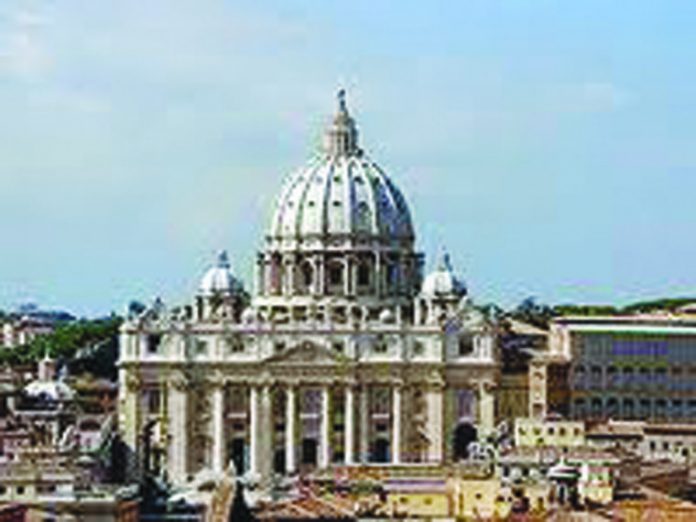
Those old enough to remember the decade of the ’50s (and earlier) are aware of some characteristics of the Roman Catholic Church in the United States in those days:
• Mass celebrated only in Latin
• The priest with his back to the congregation and facing the altar
• Only bread (the Host) given to lay people during Communion
• Meatless Fridays all year
• Rigid fasting during Lent
• Absence of congregational singing
• Only male alter-servers
• Rules against entering non-Catholic houses of worship
• Bible study discouraged.
All of this was changed by a dramatic development in October 1962.
Giovanni Battista Montini, an elderly Italian Cardinal, was elected to be Pope of the Roman Catholic Church in October 1958. While many expected him to be a caretaker who would carry on the status quo for only a short period of time, they were in for a surprise.
John Paul XXIII (his papal name) was concerned by the many challenges the church faced: the Cold War between the United States and the U.S.S.R., widespread poverty in Latin America, rebellions against colonial rule in Africa and plunging Mass attendance in Western Europe. He decided to summon bishops from around the world to meet with him in an Ecumenical Council, the 21st in the history of Catholicism. (A “council” is a meeting, principally of bishops, which makes decisions that are binding on the whole church.) His goal was to “open the window of the Church to let in some fresh air.”
Vatican II, as it came to be known, opened on Oct. 11, 1962; in attendance were more than 2,000 bishops, 450 theologians, 1,000 reporters, and numerous official observers from world religions, including representatives of other Christian communities. The task was to assess the church’s role in a changing world and decide how to increase its effectiveness in spreading the Gospel.
It met in four sessions. John XXIII died in June of 1963, but his successor, Pope Paul VI, reconvened the Council; its work continued until Dec. 8, 1965.
The results of Vatican II were dramatic:
• It rejected centuries of anti-Semitism. Historically, Christians justified mistreatment of Jews as the result of their crucifixion of Jesus. Vatican II decried this history and forbid hatred, persecution and displays of anti-Semitism “directed against Jews at any time and by anyone.” The Church acknowledged its Jewish roots and the Jews’ “covenant with God.”
• Permission was granted for Catholics to celebrate the Mass in the “vernacular,” the language of the people.
• The Church was to provide translations of the Bible in vernacular languages and to encourage the study of Scripture.
• It encouraged better relations with non-Roman Catholic Christians. While formerly Catholics often looked down on Protestants, Orthodox and Anglicans as “heretics” and generally shunned them, they now became “separated brethren.” Today joint worship services and inter-faith dialogues are common.
Vatican II was one of many phenomena associated with society’s turmoil against authority in the 1960s. While some today blame its decisions for decline in Catholicism, others say it didn’t go far enough, especially in changing the status of women.
The Catholic Church has declared a Year of Faith from Oct. 11, 2012 to Nov. 24, 2013, in observance of the 50th anniversary of the opening of the Second Vatican Council. It has called for “a conversion – to turn back to Jesus and enter into a deeper relationship with him.” The Diocese of San Jose has many activities scheduled during this time period; for example, St. Mary Church in Gilroy recently presented an informative series explaining the legacy of Vatican II.
To find out about upcoming events, visit www.dsj.org.









